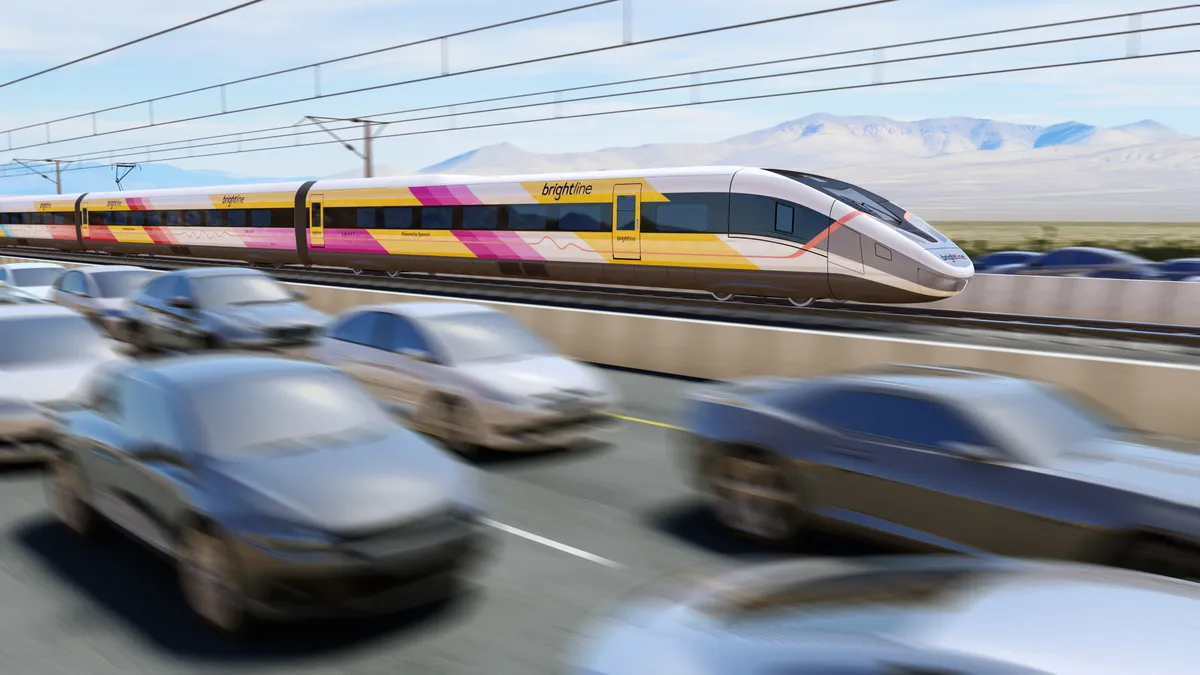Dive Brief:
- High-speed rail in the U.S. could reduce greenhouse gas emissions from transportation, bring economic benefits to cities and improve regional connectivity, concludes a report published this month by the Mineta Transportation Institute.
- The report notes that the only trains in the U.S. capable of operating faster than 150 mph are Amtrak’s Acela trains, but they reach those speeds for only about 50 miles of track along the Northeast Corridor between Boston and Washington, D.C.
- The Mineta report looks at the benefits touted by several high-speed rail projects, but all are still in the planning phase, except one under construction in California.
Dive Insight:
Worldwide, more than three billion passengers ride high-speed trains along nearly 35,000 miles of track each year. But in the U.S., many intercity passenger trains operate at speeds less than 125 mph and are often limited to 79 mph where they share the right-of-way with freight railroads.
The Mineta report states that shifting travelers “from flying and driving to electrified [high-speed rail] would reduce [greenhouse gas] emissions.” It cites projections from the California High-Speed Rail Authority, which seeks to build an 800-mile high-speed rail line connecting Los Angeles, San Francisco, Sacramento and San Diego, and from Brightline West, which is looking to construct a 186-mph line between Las Vegas and Southern California. Brightline claims that its project would remove 3 million cars each year from the travel corridor.
In an effort to encourage travelers to use electric, high-speed trains and thus lower greenhouse gas emissions, France banned commercial flights on some short routes in May. However, only three flying routes were cut, and the decree has been criticized as having little effect.
Both California projects estimate that thousands of jobs have been or will be created. The California High-Speed Rail Authority says in its 2022 business plan that it has created 7,800 jobs building the line in the state’s Central Valley, while Brightline West says it will create over 10,000 construction jobs and more than 1,000 permanent jobs in operations and maintenance. These two projects are competing for federal grants that will help them build the high-speed lines.
The Mineta report concludes that “a shift to [high-speed rail] from other modes of transportation could help the public sector save money by reducing the need for highway, airport, and other infrastructure improvements.”












